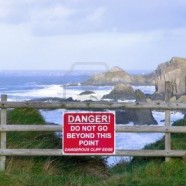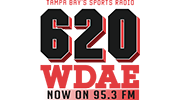Where’s Your Edge?
It’s a commonly known statistic that 98% of those who gamble – be it consistently or infrequently – end up with less money than they started with. The remaining 2% are your professionals. There are many aspects that separate the professionals from the rest of the pack but the key factor is an edge. Without an edge you can’t succeed in the gambling industry long term. And any success you may have experienced short term without gaining a true edge will only fool you into believing your inevitable decline will be short lived.
Written by Jay Jarrahi (Follow him on twitter @JayJarrahi)
Bookmakers revel in bettors who are not price or line sensitive and that stream of ill-informed money is why bookmakers will always make multi-million dollar (or pound in my case) profits. If you’re reading this article and you’re someone who backs a team or player because you “think” they or he/she will win – you’re on the wrong track. Professionals aren’t in the business of fortune telling.
We all have views and opinions on how any number of tournaments or matches might play out, but that’s not what a professional is betting in attempts to make a living. A professional sports bettor or sports trader is no different from a stock trader; they just happen to deal in sports and not other aspects of business and industry.
The aim is always to find value, buying at the right price or the right line, and in some instances selling that price or line when the market moves, be it from an influx of money or due to further developments in the tournament or match they have financially entered into.
WHAT IS AN EDGE?
The simplest way to define an edge in betting is with the toss of a coin. We know for a fact that there is a 50/50 chance a coin will land on heads or tails. A 50% chance in betting parlance equates to a true price of EVS. If you bet heads at EVS you have gained no edge. If you make that bet a thousand times the chances are you will come out breaking even. You might make a small gain or loss but only because you have been marginally lucky or unlucky – not because you have found an edge or underestimated the value of your wager. Now if someone were to offer you 11/10 on heads you have a decided edge as we know the true price and probability that the coin will lands on heads is EVS. And likewise if you were betting heads at 10/11 you have given yourself no chance of winning long term as the bet you have taken overstates the true probability of its real chances.
How do we apply value to sports betting? In many cases it’s a far more difficult task and requires much expertise in particular sports in being able to understand and process various match-ups and a myriad of other factors that can affect how a tournament or match in any sport might play out. The starting point is your opinion on teams and players but then applying that to convert into prices and lines is where you will eventually succeed or trip up. If over years you find yourself to be making a positive ROI (return over investment) then your assessment of the sports you deal in is clearly at a high level to varying degrees. And if you’re still a part of the 98% then your methods of assessment and projection evidently need more work.
STARTING POINTS
Much like the example with the toss of a coin the simplest way to price and line up an NFL match is by assessing two evenly matched teams to define our edge. If you believe two teams to be equal to each other in key match-up elements where neither team has a decisive advantage to exploit and feast on a particular in-game match-up then if the two teams played on a neutral venue there would be no point spread for the encounter. Or a 0.5 point spread which is essentially the same thing if we are to assume it was the Super Bowl (rather than a regular season game) where a tie would not exist.
Should either team be playing at home then the home advantage would ordinarily give them an advantage of 3 points. Now if two equal teams were playing and the road team is getting 4 points rather than 3 – we have an edge. Likewise if the home team was favoured by anywhere from 0.5 to 2.5 points we have defined an edge on the home team.
BEING SELECTIVE
I’m often asked in relation to The Overrule – a tennis handicapping site – why I don’t advise more picks and selections on a daily basis. The answer is simple; I only advise where I believe there to be a clear edge. Anyone can post selections every day, particularly in a sport like tennis, where there are matches aplenty during the week most weeks of the year. However, there isn’t always clear value to be had every day and in tennis there are greater yields to exploit in outrights/futures markets rather than match betting day to day.
After many years of personal experience inside the industry on shop floors, trading floors and through my own wagering, particularly with tennis, soccer and NFL, value will often leap off the page because I’ve already tissue priced (set my own prices/lines) before the bookmakers release their own lines. Areas of discrepancy are where you look to key in on but in most cases the prices and lines will be where I’d set them. In which case there is no bet to be had on those instances since we are not betting for the sake of betting, but for the intent to expose where we believe to have found an edge. There will be other cases where an edge is created by market moves and in-play opportunities but we will touch on those aspects in the weeks and months to come.
The next time you place a bet, ask yourself where your edge is and define it as clearly as you can in number, be it price or line discrepancy. And if you find your edge might not be as significant at first glance, that might be the time to become more selective in your process.












